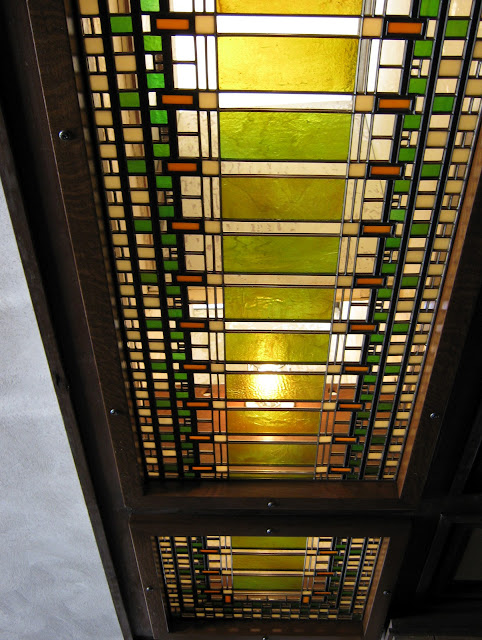 |
| Commander Riker (Jonathan Frakes) |
At first, I scratched my head and thought it must be one of those exceedingly rare and fictional elements they're always referring to (e.g. dilithium - fictional in the Star Trek universe). But no, magnesite is simply magnesium carbonate, a compound relatively common on earth, and used in steel and synthetic rubber production and...as a binder in flooring material.
 |
| Magnesite (magnesium carbonate) crystals |
This is where Frank Lloyd Wright and his Buffalo buildings come in: Wright specified a building material commonly called "magnesite" - though it's really an aggregate of magnesium carbonate and other materials such as excelsior ("wood wool") - for both the Martin House and the Larkin Administration Building. In the Martin House, "magnesite" was used as a flooring surface in the basement level and second floor. In the Larkin building, it was used even more extensively, incorporated even in some of the desk tops and other Wright-designed metal furnishings (see Quinan, Frank Lloyd Wright's Larkin Building: Myth and Fact, p. 56).
 |
| The light court of the Larkin Administration building. |
So perhaps a universal translator is required to distinguish magnesite from "magnesite," but it's one term shared by Frank Lloyd Wright's 20th century "Buffalo venture" and the Enterprise's 24th century star trek.
And, if I may introduce a new definition for the term:
magnesite - a substance known to create confusing quantum singularities in the blogosphere.









